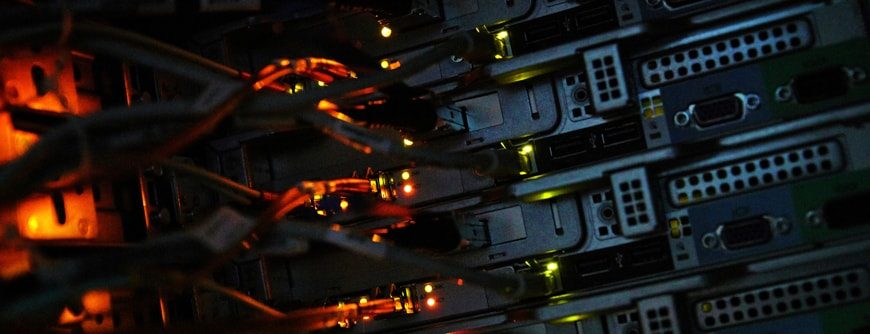What Is NVMe over Fabrics (NVMe-oF)?
NVMe over Fabrics (NVMe-oF) is an extension of the NVMe network protocol to Ethernet and Fibre Channel delivering faster and more efficient connectivity between storage and servers, as well as a reduction in CPU utilization of application host servers.
Why NVMe-oF Is the Future of Data Storage
Before NVMe-oF, choosing a connection type for your storage area network (SAN) really boiled down to three options:
- iSCSI: An internet protocol (IP)-based storage networking standard for transferring SCSI (small computer systems interface) commands over TCP/IP-based intranet. iSCSI uses standard Ethernet cables and switches to connect to storage devices and typically operates at speeds of 1GB/s. Speeds higher than 10GB/s are possible with high bandwidth Ethernet cards.
- Serial attached SCSI (SAS): A point-to-point serial protocol for transferring SCSI commands over SAS cables. SAS uses expanders with ports called SAS channels to connect up to 128 drives via host bus adapters (HBA). Speed options include 3GB/s, 6GB/s,12GB/s, and 22.5GB/s.
- Fibre Channel Protocol (FCP): FCP is a protocol that transports SCSI commands over fiber optic (or copper) cables. Fibre Channel (FC) networks are called fabrics because all the switches in a network can behave as one big switch. FC avoids the electromagnetic interference (EMI) problems of other network technologies by using light to deliver signals. FC speeds typically range from 1 to 128GB/s.
But while these technologies were perfectly fine for hard-disk drives (HDDs) and tape storage systems, they proved to be performance bottlenecks for solid-state drives (SSDs). SATA and PCIe SSDs couldn’t quite unlock the hidden potential everyone knew was in flash memory.
Enter NVMe—a transfer protocol specifically designed for connecting SSDs to PCIe buses. Scaled to the data centre, the enterprise-ready all-flash array was born. Adding the lossless high-speed data transfer capabilities of FC to NVMe with NVMe-oF was simply the next logical step in the evolution of the all-flash array.






